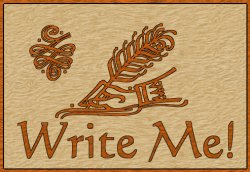For this example we will be using a Ukrainian tune called Rushnychok, mainly because I remember fairly clearly the thought process that I went through to arrange the piece originally, but also because it presents some interesting but by no means unusual challenges which pertain to arranging specifically for the button accordion. The music was originally written by Platon Maiboroda, and the lyrics, which I don't include here, were written by Andrij Malyshko. To start with, here is the tune:

Although we haven't yet discussed how to determine the key or mode that a piece of music is played in, I will tell you that this particular piece is in E minor. This will be a useful bit of information as we proceed with setting the chords.
The best thing to do is to look at the tune measure by measure. Our general method will be to examine each of the 24 measures in this tune and come up with the most likely chords to match the melody, then we will go back and determine whether the chosen chords are possible, given the diatonic nature of the instrument. In other words, do we have those chords and will the melody allow those chords to be played at that time by virtue of matching bellows direction? If we answer those questions positively, we can look at the preceding and following measures to make sure we have an appealing progression. If not, we will need to look at choosing a different chord, or a different fingering to allow the chosen chords to be played. Lastly, we will look to see that the air situation is manageable. Once we are done, we will play it through. This "ear test" is the proof of the pudding, and the most critical phase of the excercise. If it doesn't sound good, we must go back and doctor things up (adjust, rework) a bit to make them better, keeping in mind that any change may have an impact on the chords that precede or follow.
